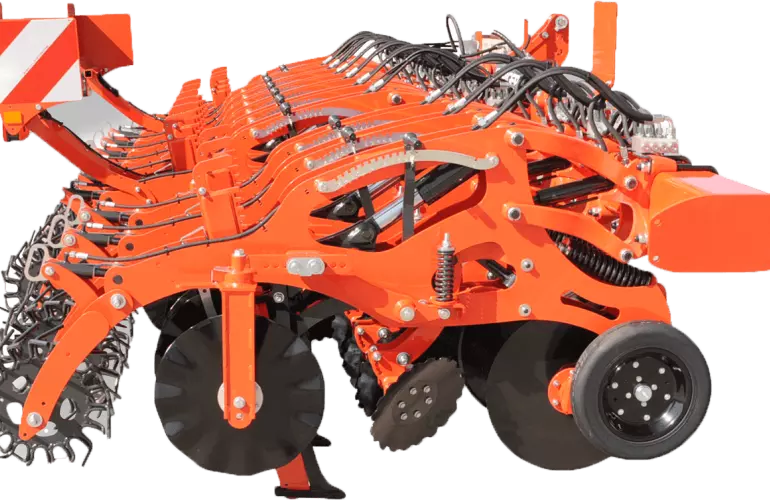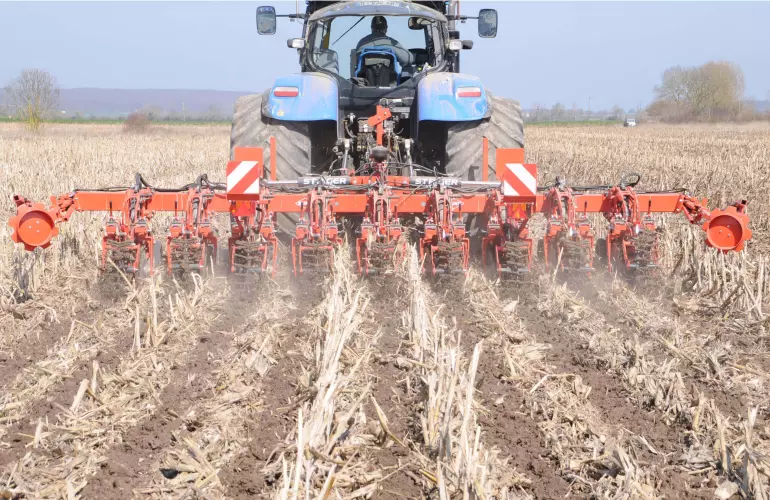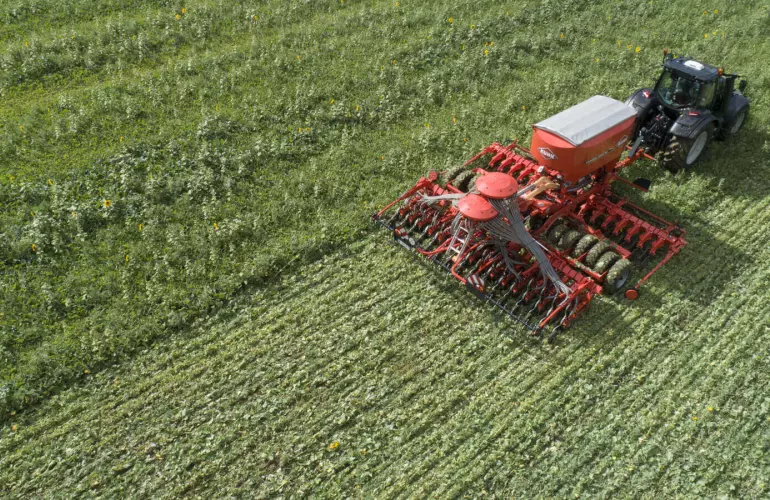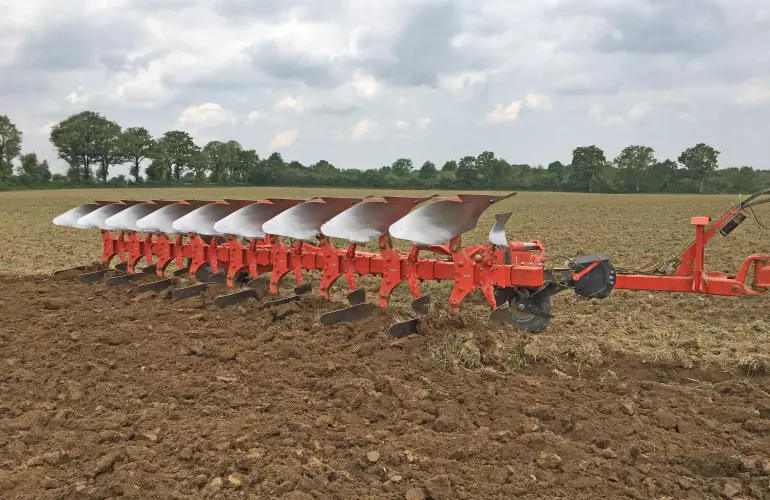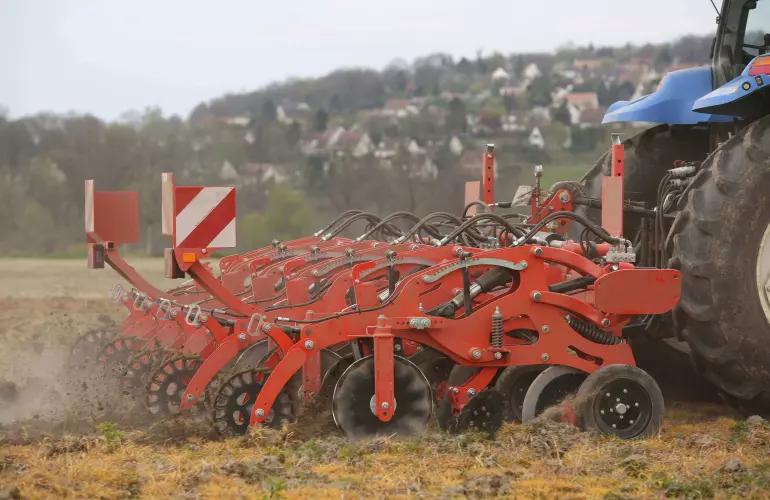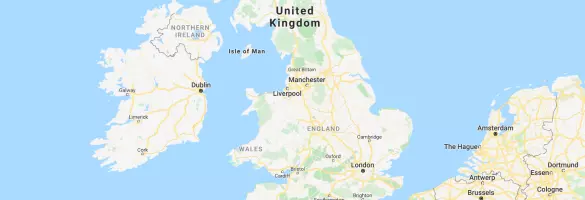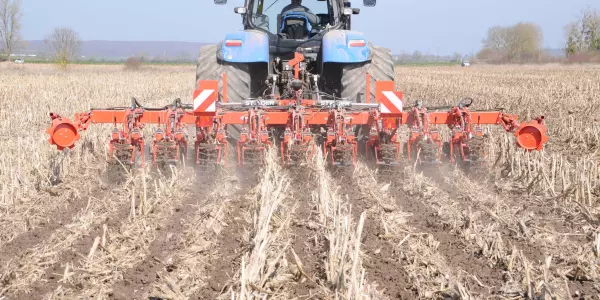
STRIGER 100
Available from 4 to 12 rows, the STRIGER 100 is the benchmark for strip-till. It only prepares the seeding line ready for planting crops in rows.
Available from 4 to 12 rows, the STRIGER 100 is the benchmark for strip-till. It only prepares the seeding line ready for planting crops in rows.
The process of strip tillage means that only the land that is planted is tilled. These ‘strips’ are created using a strip till machine such as the KUHN Striger. This minimum tillage method can incorporate fertiliser in the same pass to reduce the impact of machinery and the cost of fuel. Strip Till helps to warm up the seeding zone and provides the required loosening for good root development.
A strip till machine can be used to follow crops such as maize/corn, sunflowers, oil seed rape (OSR), soya and sugar beet in most soil types. It is best suited to precision drilled crops. With discs at the front and coulters to prepare the soil, the KUHN Striger also has a leg that prepares the soil for granular, liquid, or organic fertiliser to be added.
The working module is the heart of the Striger. It includes:
The opener disc of the KUHN Striger can be straight or wavy depending on the soil type. It parts the soil to form the basis of the strip or channel. A straight disc creates a cleaner cut whilst the wavy disc provides more tilth. Trash is removed before the tine loosens the soil at a depth of between 7 and 30cm.
This strip or channel is then prepared for the application of fertiliser or the injection of slurry and the Striger can be specified with a solid or liquid fertiliser applicator, or a macerator for use with organic slurry.
Closing discs either side of the tine prevent soil ejection and control the width of the strip. At the rear, a press wheel firms the strip to help moisture retention and improve seed to soil contact.
A strip tillage system is halfway between conventional tillage and no-till. It offers agronomic benefits and can reduce the cost of machinery. At times when fertiliser prices are high, strip till is more efficient because it places fertiliser where it is needed.
By only cultivating the land that is going to hold the new crop the area between the rows is left largely unaffected by machinery. This improves the soil structure making it easier to move machines over the land and also helps to improve soil health.
By using a strip till method with the KUHN Striger the operator can retain more soil moisture and the strips warm more quickly to encourage germination and plant growth.
Only one pass is needed to prepare the rows and apply fertiliser. The Striger parts the ground and applies granular, liquid, or organic fertiliser so that only one subsequent pass with a seed drill such as the KUHN Maxima 3 is required. By localising the application of fertiliser, operators can reduce the rate of application which saves time and reduces cost.
The areas between the strips retain organic matter which reduces weed growth. By leaving this area uncultivated it also saves time and fuel and improves the overall structure of the field which makes it better at load carrying when it comes to harvest.
Like many innovations, strip tillage was created by mistake in USA in the 70’s. A farmer applied fertiliser every 75 cm with a shank. After planting at a 30° angle, he found the corn was better where he had applied fertiliser. The next year he used a tine and applied fertiliser in a same row to the drill; and strip tillage was born.
Strip till is an economical use of machinery that prepares the soil and applies fertiliser in one pass, making strips that are ready to be seeded. Compared to conventional plough and power harrow systems, this reduces the number of times a tractor needs to pass over the field, which offers fuel and time savings whilst also reducing soil compaction.
Strip till warms the seeding line which improves germination of the seed. It also preserves moisture as less soil is displaced. This keeps organic material on the surface and limits weed growth between rows.
By choosing strip till rather than a no till method, the soil is seeing the benefit of minimum machine intervention and the creation of strips which warm more quickly to help the plant establish. This leads to deeper root systems which strengthens the crop. There is also the potential to increase yield compared to a no till method because the strip offers the opportunity to accurately place both seed and fertiliser.
Both forms of tillage are quite distinct in that strip tillage involves minimum disturbance of the soil surface mainly aimed at soil moisture conservation and maintenance of soil structure. Conventional tillage on the other hand involves complete soil preparation including ploughing, harrowing, and other forms of soil inversion.
Strip tilling is a form of no inversion tillage with minimum disturbance of the soil surface. It involves the tillage of soil surfaces in strips for cultivation of crops. However, no inversion tillage also referred to as conservation tillage and involves all soil tillage methods with minimum soil disturbance or maintenance of a proportion of crop residue including mulching, strip tillage, no-till, in-row tillage etc.
Strip tillage is best carried out in spring, summer, and autumn when the condition of soil moisture is most suited.
For the preparation of the seeding line whether it is during spring rework or in a single pass, it can start 7 days to 6 weeks before seeding for heavy and light soil. The purpose is to create fine soil in the first few centimetres of the horizon to enable the seeding lines to warm up quickly.
In summer, the use of strip till can be done immediately after harvest and just before seeding. The goals are to stimulate good tap root development and create fine soil with a consolidated surface structure (shallow seeding).
In autumn, strip tillage operation can start from September to October for compacted soil or until November for late harvest. In the last case, it can be possible on frozen soil according to adhesion and load bearing capacity of soil. The goals are to promote fissuring and allow frost action to work (thaw and precipitation).
